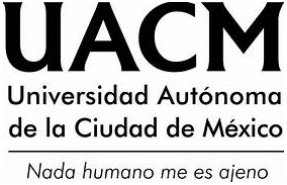EVOLUTION OF AGRICULTURAL PRODUCTION IN THE MEXICAN COUNTRYSIDE: CONCENTRATION OF PRODUCTION, POVERTY AND PLURIACTIVITY
DOI:
https://doi.org/10.29092/uacm.v7i13.119Keywords:
Agricultural productivity, productive concentration, pluriactivity, rate of employment, povertyAbstract
In the last two decades, agricultural productivity growth has been remarkable despite the weakening of the public policies which promote it. A reason that made this growth possible was the strengthening of productive chains and contract agriculture, creating a new model that focused on the most productive farming regions and in the most efficient businesses that were capable of increasing productivity in order to counter the effects of increasing input costs and decreasing prices. It’s a polarizing model that excludes any kind of production units that cannot compete on the market and also encourages concentration of agricultural production. From 1992 to 2004, 1.4 million farm households of all sizes disappeared, contrary to the popular economic theory at the time, which essentially condemned the poorest. To survive the constant fall in farm prices, “campesino” production units diversify their sources of income and increase their rate of employment but are still unable to overcome poverty.
Downloads
References
C. DE GRAMMONT, H., (2009), “La desagrarización del campo mexicano”, en Convergencia. Revista de Ciencias Sociales, año 16, núm. 50, Universidad Autónoma del Estado de México, Toluca.
CHAYANOV, A. V. (1974), La organización de la unidad económica campesina. Buenos Aires: Nueva Visión.
CEPAL (2006), Panorama Social de América Latina 2005. Washington, DC: Comisión Económica para América Latina y el Caribe.
——— (1982), Economía campesina y agricultura empresarial. México: Siglo XXI, INEGI, 1992-2004, Encuesta Nacional de Ingresos y Gastos de los Hogares: Disponible en línea en inegi.org.mx, 1 de mayo de 2008.
LARA FLORES, S. Y C. DE GRAMMONT, H.,(en prensa), Reestructuración productiva y encadenamientos migratorios en las hortalizas sinaloenses. México.
REYES OSORIO, S., STAVENHAGEN, R., ECKSTEIN, S., BALLESTEROS, J., (1974), Estructura agraria y desarrollo agrícola en México. México: Fondo de Cultura Económica.
ROCHARD, J., (1966), Les ouvriers-ruraux. París: CMR édition-librairie/ Les éditions ouvrières.
ROSENZWEIG, A. (2005), El debate sobre el sector agropecuario mexicano en el Tratado de Libre Comercio de América del Norte. México: Cepal.
SIACON, Servicio de Información y estadística agroalimentaria y pesquera. Disponible en línea en sagarpa.org.mx, 31 de mayo de 2008.
YUNEZ-NAUDE, A, y TAYLOR, J. E. (2000), Los determinantes de las actividades y el ingreso no agrícola de los hogares rurales de México, con énfasis en la educación. Disponible en línea en www.edac.org/ publicaciones/xml/4/22444/L2096e-Yunez.pdf, 13 de marzo de 2010.
Downloads
Published
Issue
Section
License
This Journal is licensed under Creative Commons Mexico 2.5. It is allowed to reproduce and disseminate the contents of the Journal for educational or research purposes, not for profit, as long as they are not mutilated and cite the source (Andamios, Revista de Investigación Social) and the author.
The copyright of the articles published in Andamios, Revista de Investigación Social are transferred by the author(s) to Universidad Autónoma de la Ciudad de México when the originals have been accepted, so that they are published and distributed both in the printed and electronic versions of the Journal. However, as established by law, the author(s) retains their moral rights. The author(s) will receive a form of assignment of copyright that they must to sign when their original has been accepted. In the case of collective articles, the signature of one of the authors will suffice, provided that the latter has obtained the consent of the others.
Authors may use the material of their article in other works or books published by themselves, with the condition of quoting Andamios as the original source of the texts.
The articles contained in this publication are the responsibility of their authors and do not compromise the official position of Andamios, Revista de Investigación Social of the Universidad Autónoma de la Ciudad de México.


